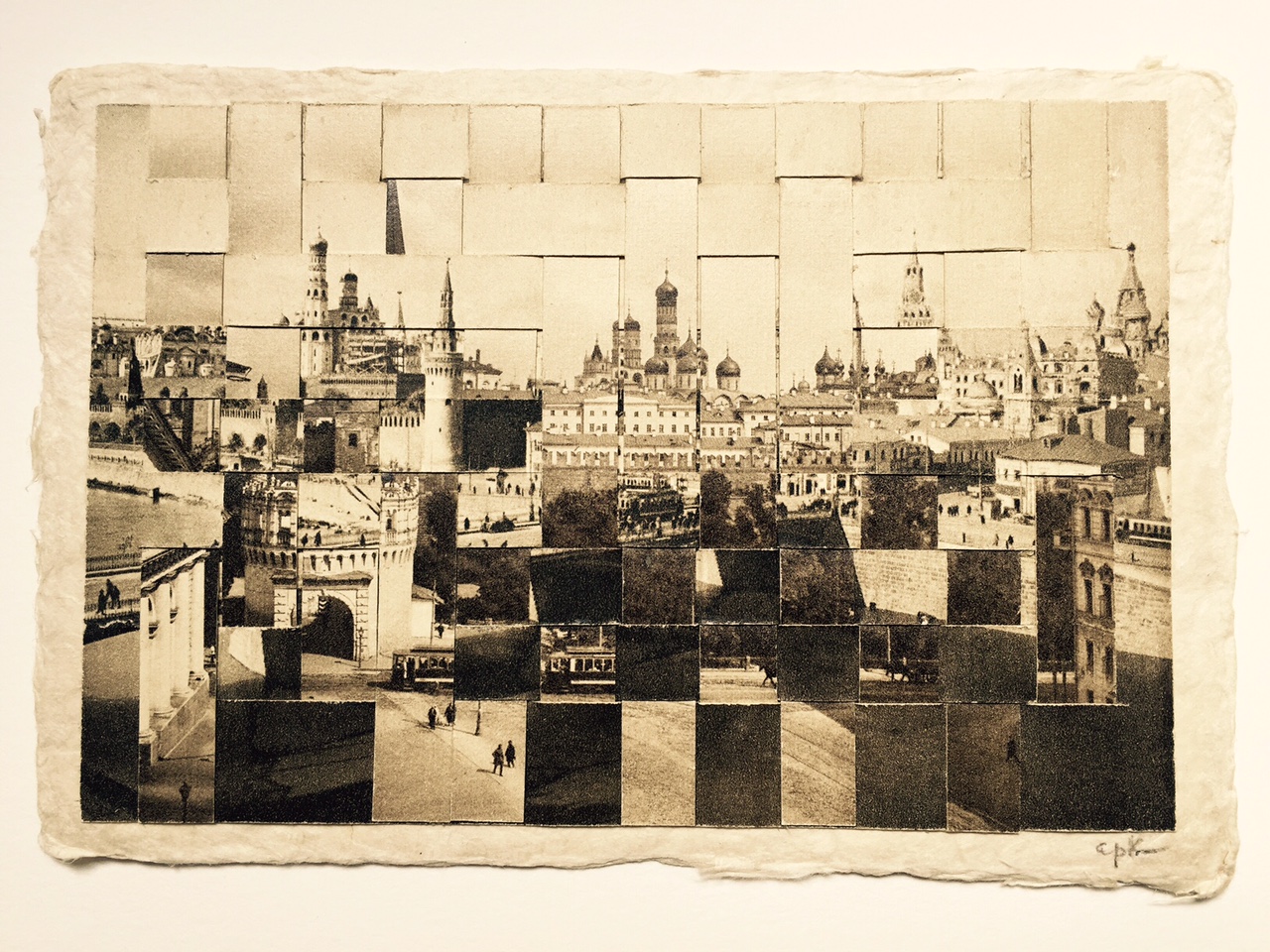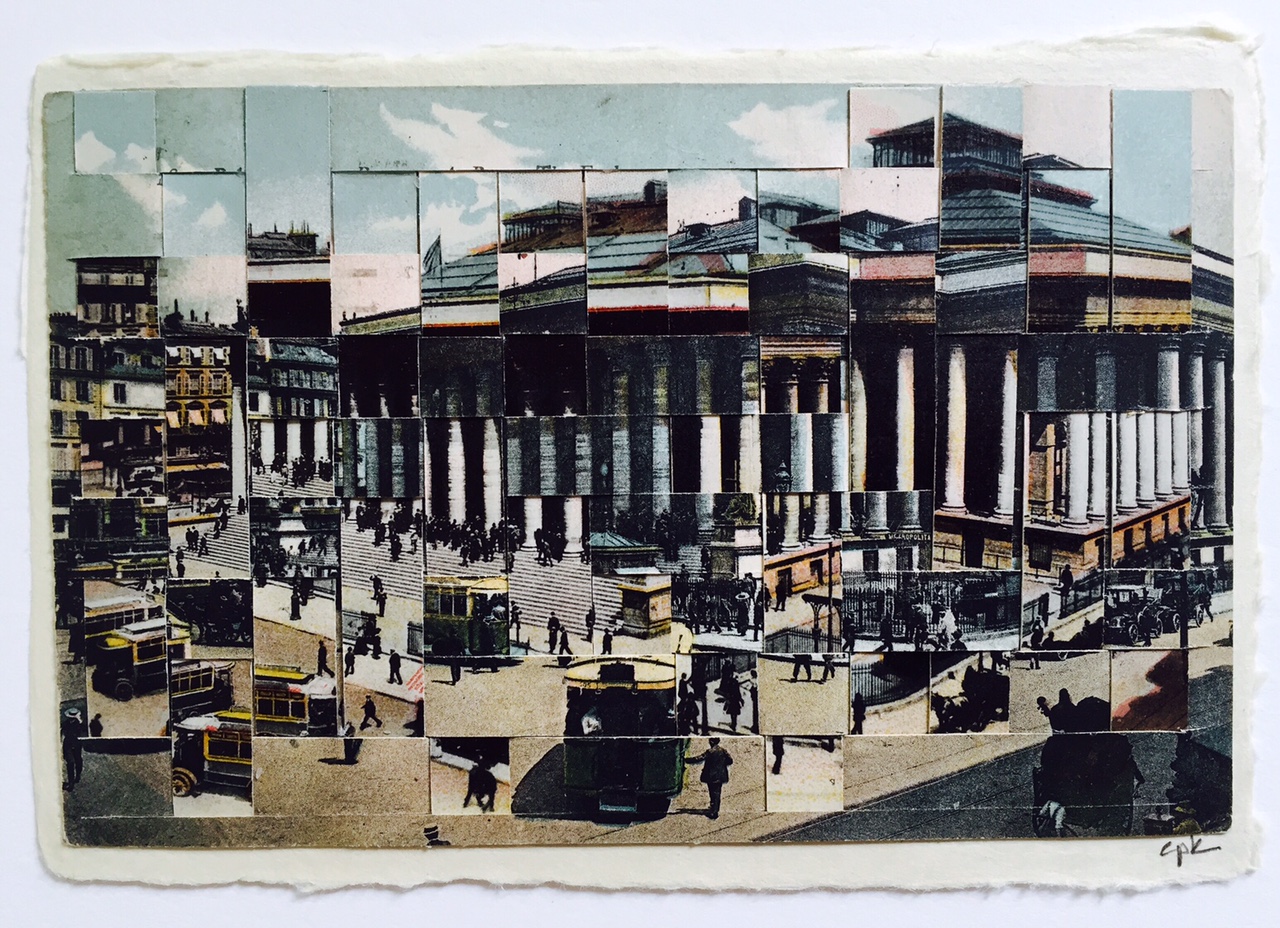















Postcards
Due to industrialization, improved transportation, an increase in leisure time as well as the wanderlust generated by landscape painting and photography, the 1900's witnessed an expansion in the fascination and the exploration of the environment.
Prior to email, texting, Instagram and Twitter, the postcard was an economical and relatively immediate means of connecting and communicating, sending a few lines of text with a relevant and compelling visual image. Trysts, picnics, walks, hikes, swimming, camping and boating excursions fueled the sentiment "wish you were here". The innate impulse to share one's experience found expression in the iconic photo-postcards of the 1900's, the Golden Age of the printed postcard. For the cost of one cent, notification of a delay in plans, sharing an inspirational view or a destination safely reached could easily and quickly be communicated.
Altering the iconic images by weaving multiple views together, the pixelated scenes become intriguing alternate visions of a reality suspended from their original context.The aged quality of the photograph informs and enhances the varied combinations creating simultaneous vantage points. They playfully represent the merging of a vision of history, the moments caught and the subjective impressions which through the passage of time have been transformed.
Photo-postcards from the early 1900's provide an intriguing, subtle and intimate format to explore worlds unlimited in association, memory and history.







Views of the Moselle/Ansichten der Mosel
Die Mosel* - a booklet of representative photogravure images dated 1917, inspired this portfolio of ten altered and recombined antique photo postcards. The charming towns, castles, and scenic views captured along the river valley are an eloquent testimony to the atmosphere of the area in the early twentieth century.
More than 60 years later I had the opportunity to live in Southern Germany for a few years and extensively tour the countryside. The scenic strolls, day trips and constant explorations provided rich varied experiences which led to a deep understanding of the cultural complexities. Observation is a personal modification of the visual information one receives. The dense quality of the photogravure enhances the varied combinations creating simultaneous vantage points. They represent the merging of a vision of history, the touring experience and the subjective impressions which through the passage of time have been transformed, now over forty years since my first encounter with this countryside.
*A tributary of the Rhone running through Germany, France and Luxembourg
"Through cutting and reassembling ten antique postcards to form new scenes, Kunstadt recontextualizes the complex history and culture of the area in an attempt to better understand her sojourn there."
Alexander Campos, Tell Me How You REALLY FEEL: diaristic tendencies, Center For Book Arts, New York, NY.


Valle de la Meuse/Valley of the Meuse* - An Environmental Paradigm
Valle de Meuse* - a booklet of representative images from the early 1900's, inspired this folio of five altered and recombined antique photo postcards. The boat landings, charming castles and scenic views captured along the river valley are an eloquent testimony to the appealing atmosphere of the region early in the twentieth century.
The river valley of idyllic views captured for its touring potential was eventually environmentally challenged. Its lower Belgian portion was the first fully industrialized area in continental Europe. The air became so polluted that in 1930 several thousands became ill and within a few days sixty perished from excessive fluorine gas from the factories.
An international agreement was signed in Belgium in 2002 about management of the river by France, Germany, Luxembourg, the Netherlands, and Belgium. Thus an International Commission on the Meuse has the responsibility for implementation of the treaty.
*The Meuse is one of the five oldest rivers in the world. The Meuse is a major European river, rising in France and flowing through Belgium and the Netherlands before draining into the North Sea. From 1301 the upper Meuse roughly marked the western border of the Holy Roman Empire. The first landscape painted in the Middle Ages was a landscape of the Meuse.